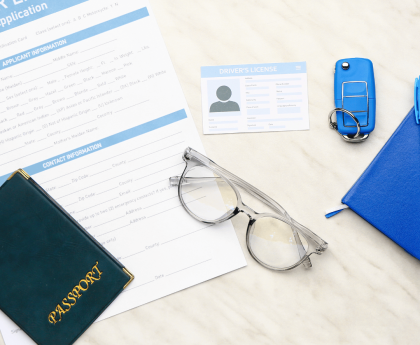Logo Registration: Process and Services, Eligibility, Documentation, and How to Register
Introduction
Logo registration is a critical step for businesses as logos serve as the face of a brand, embodying its identity and values in a visually memorable way. To safeguard this valuable asset and prevent unauthorized usage, logo registration is indispensable. This article delves into the logo registration process, eligibility criteria, necessary documentation, and provides step-by-step guidance on how to effectively register your logo. Whether you’re a startup aiming to establish a distinctive brand identity or an established business looking to protect your logo, a thorough understanding of the logo registration intricacies is imperative for securing your brand’s visual legacy.
Logo Registration: Why It Matters
Logo registration is the legal process of securing exclusive rights to use a particular logo for your business or brand. Registering your logo offers several important advantages:
Legal Protection: Logo registration provides legal evidence of your ownership and the exclusive right to use the logo for your business purposes. This protection helps prevent others from using a similar or identical logo, reducing the risk of brand confusion.
Brand Identity: A registered logo reinforces your brand’s identity and distinguishes it from competitors. It becomes a valuable asset that adds to your brand’s reputation and recognition.
Licensing and Expansion: Registered logos can be licensed to others, providing an additional revenue stream. Moreover, a registered logo can facilitate business expansion and franchising.
Legal Recourse: If someone infringes on your logo rights, you have legal recourse to protect your brand and seek damages.
Eligibility for Logo Registration
Not all logos are eligible for registration. To be eligible, a logo must meet certain criteria:
Uniqueness: The logo should be distinct and not confuse consumers with existing trademarks or logos. It should not be a generic or common design.
Non-descriptive: The logo should not describe the products or services you offer. It should be distinctive in its own right.
Non-offensive: Logos containing offensive or vulgar elements may be rejected.
Not Misleading: The logo should not mislead consumers about the nature or quality of your products or services.
Required Documentation
Before you start the registration process, you will need to gather the necessary documentation. These typically include:
Clear Copy of the Logo: A high-resolution image of the logo in a format specified by the trademark office.
Details of Applicant: Information about the individual or entity applying for registration, including name, address, and contact details.
Goods/Services Description: A list of the goods or services associated with the logo. Be specific and accurate.
Proof of Use: If the logo is already in use, provide evidence such as marketing materials, product labels, or a website link.
Power of Attorney: If someone other than the applicant is filing the application, a power of attorney may be required.
How to Register Your Logo
The process of logo registration can vary by country, but the general steps are as follows:
Search Existing Trademarks: Before applying, conduct a trademark search to ensure your logo is unique and doesn’t conflict with existing trademarks.
Prepare Application: Complete the trademark application form provided by the relevant intellectual property office. Include all required information and documentation.
File the Application: Submit the application along with the filing fee to the appropriate trademark office.
Examination: The trademark office will examine your application to ensure it meets all legal requirements. This may take several months.
Publication: If your application is approved, your logo will be published in the trademark office’s official gazette to allow for opposition by third parties. If no objections are raised, your logo will move forward.
Registration: Once the opposition period has passed without any issues, your logo will be registered, and you will receive a certificate of registration.
Importance of Professional Guidance
While it is possible to navigate the logo registration process independently, many businesses opt to seek professional assistance, such as hiring a trademark attorney. Here’s why professional guidance can be valuable:
Expertise: Trademark attorneys specialize in trademark law and have in-depth knowledge of the registration process. They can help you avoid common pitfalls and navigate legal complexities.
Trademark Searches: Attorneys can conduct comprehensive trademark searches to ensure your logo is truly unique and unlikely to face opposition during the registration process.
Efficiency: Legal professionals can streamline the application process, ensuring all documentation is in order and submitted correctly to avoid unnecessary delays.
Defense: In the event of trademark infringement or opposition, an attorney can provide strong legal representation to protect your logo and brand.
International Logo Registration
If you plan to expand your business internationally, consider registering your logo in multiple countries. Here are two common methods for international logo registration:
Madrid System: Under the Madrid Protocol, you can file a single application in your home country and extend the protection to multiple member countries. This system simplifies the process and reduces costs compared to filing individual applications in each country.
Regional Trademark Offices: Some regions, such as the European Union and the African Intellectual Property Organization, offer regional trademark registration systems. Registering your logo in these regions can provide protection across multiple countries with a single application.
Maintenance and Renewal
After successfully registering your logo, you must actively maintain and renew your trademark. This typically involves:
Maintenance Fees: Periodically, you’ll need to pay maintenance fees to keep your trademark registration active. The frequency and amount of these fees vary by country.
Renewals: Trademark registrations have set renewal periods, often every 10 years. It’s crucial to stay aware of these dates and file for renewal promptly to prevent your trademark from expiring.
Enforcement and Protection
Logo registration provides legal grounds to enforce your trademark rights. If you encounter instances of logo infringement or unauthorized use, consider the following steps:
Cease and Desist Letters: Begin with a cease and desist letter, formally notifying the infringing party of your rights and requesting them to stop using your logo.
Mediation or Negotiation: In some cases, resolving disputes through mediation or negotiation can be a more cost-effective and amicable solution.
Litigation: If negotiations fail, you may need to pursue legal action through litigation. This can be a lengthy and expensive process, so it’s typically considered a last resort.
Customs Recordation: If your logo is susceptible to counterfeiting, you can register it with customs authorities to help prevent the importation of counterfeit goods.
Final Thoughts
Logo registration is a crucial step in protecting your brand’s identity and reputation. By understanding the eligibility criteria, documentation requirements, and the process itself, you can secure exclusive rights to your logo. Regularly maintain and renew your registration, and be prepared to enforce your rights if necessary. Whether you decide to handle the process independently or seek professional guidance, logo registration is an investment in the long-term success of your business or brand.
Logo Variations and Comprehensive Protection
When registering your logo, it’s essential to consider all variations and elements of your brand’s visual identity that you wish to protect. This includes different color schemes, design adaptations, and even stylized text versions of your logo. By registering comprehensive variations, you can safeguard your brand’s identity more effectively.
Using the “TM” Symbol
Before your logo is officially registered, you can use the “TM” symbol next to your logo to indicate that you are claiming trademark rights to it. This symbol signals to others that you consider your logo to be your exclusive property, even if it’s not yet officially registered. Once registered, you can use the ® symbol, which denotes a federally registered trademark.
Monitoring and Surveillance
After your logo is registered, it’s essential to actively monitor the marketplace for any potential trademark infringements. You can do this by:
Trademark Watching Services: There are companies that offer trademark watching services, which will alert you to any new trademark applications or uses of similar logos.
Online Searches: Regularly conduct online searches to identify any unauthorized uses of your logo on websites, social media, or marketplaces.
Trade Shows and Publications: Keep an eye on industry-specific trade shows, magazines, and publications for any unauthorized use of your logo.
Licensing Your Logo
Once your logo is registered, you have the option to license its use to others. Licensing can be a lucrative way to generate additional revenue while expanding the reach and recognition of your brand. However, it’s crucial to establish clear licensing agreements that define the terms, conditions, and limitations of logo usage by third parties.
Changes to Your Logo
If you plan to make significant changes to your logo after it’s been registered, it’s advisable to consult with a trademark attorney. Modifying a registered logo can affect its trademark protection, and legal guidance can help you navigate the process of updating your trademark registration.
International Challenges and Strategies
Registering your logo internationally can be complex due to differences in trademark laws and regulations across countries. Here are some strategies to consider:
Prioritize Key Markets: Start by registering your logo in countries where you do significant business or where your intellectual property is most at risk.
Seek Local Counsel: Engage local trademark attorneys in the countries you’re targeting. They can provide valuable insights and navigate the specific requirements of each jurisdiction.
Consider Regional Trademarks: As mentioned earlier, regional trademark systems like the European Union Intellectual Property Office (EUIPO) can simplify the process of protecting your logo across multiple countries.
Use WIPO: The World Intellectual Property Organization (WIPO) offers the Madrid System for the international registration of trademarks, making it easier to expand your logo’s protection to multiple countries.
In conclusion, logo registration is a critical step in safeguarding your brand’s identity and value. By taking a proactive approach to logo registration, maintenance, enforcement, and international protection, you can maximize the benefits of your trademark and ensure its long-term success in a competitive marketplace. Remember that trademark laws may vary by country, so seeking professional advice tailored to your specific needs and goals is advisable.



